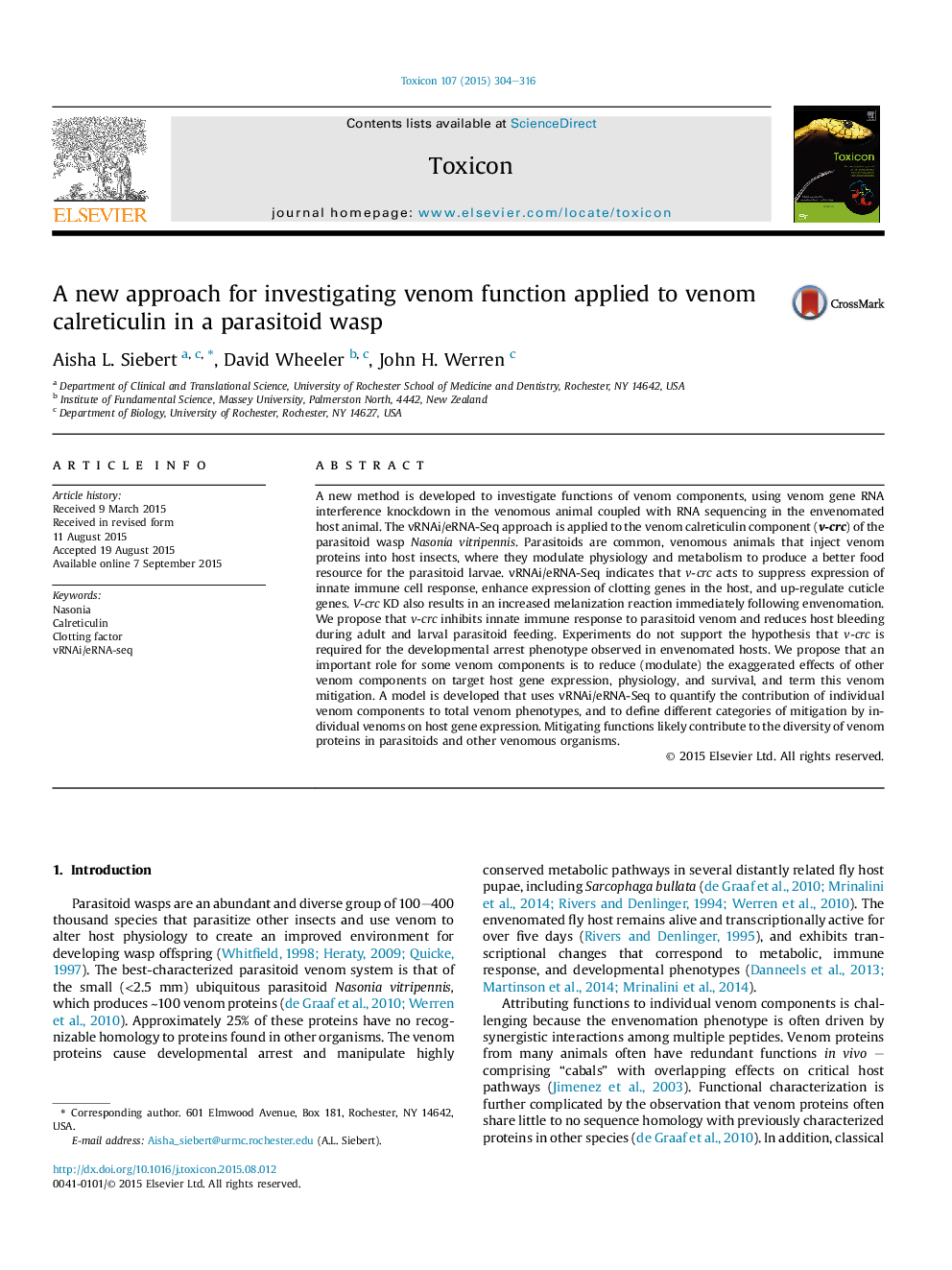| کد مقاله | کد نشریه | سال انتشار | مقاله انگلیسی | نسخه تمام متن |
|---|---|---|---|---|
| 2064293 | 1076833 | 2015 | 13 صفحه PDF | دانلود رایگان |
• We developed a method for assessing venom function using RNA interference and RNA Sequencing.
• RNA knockdown of venom calreticulin inhibits host innate immune response against Nasonia venom and acts to reduce host bleeding and melanization.
• We develop a method for quantifying the role of individual venom proteins on target phenotypes.
• We propose that a major category of venom function is to mitigate the negative effects of other venom components, thus optimizing target outcome.
A new method is developed to investigate functions of venom components, using venom gene RNA interference knockdown in the venomous animal coupled with RNA sequencing in the envenomated host animal. The vRNAi/eRNA-Seq approach is applied to the venom calreticulin component (v-crc) of the parasitoid wasp Nasonia vitripennis. Parasitoids are common, venomous animals that inject venom proteins into host insects, where they modulate physiology and metabolism to produce a better food resource for the parasitoid larvae. vRNAi/eRNA-Seq indicates that v-crc acts to suppress expression of innate immune cell response, enhance expression of clotting genes in the host, and up-regulate cuticle genes. V-crc KD also results in an increased melanization reaction immediately following envenomation. We propose that v-crc inhibits innate immune response to parasitoid venom and reduces host bleeding during adult and larval parasitoid feeding. Experiments do not support the hypothesis that v-crc is required for the developmental arrest phenotype observed in envenomated hosts. We propose that an important role for some venom components is to reduce (modulate) the exaggerated effects of other venom components on target host gene expression, physiology, and survival, and term this venom mitigation. A model is developed that uses vRNAi/eRNA-Seq to quantify the contribution of individual venom components to total venom phenotypes, and to define different categories of mitigation by individual venoms on host gene expression. Mitigating functions likely contribute to the diversity of venom proteins in parasitoids and other venomous organisms.
Journal: Toxicon - Volume 107, Part B, 1 December 2015, Pages 304–316
